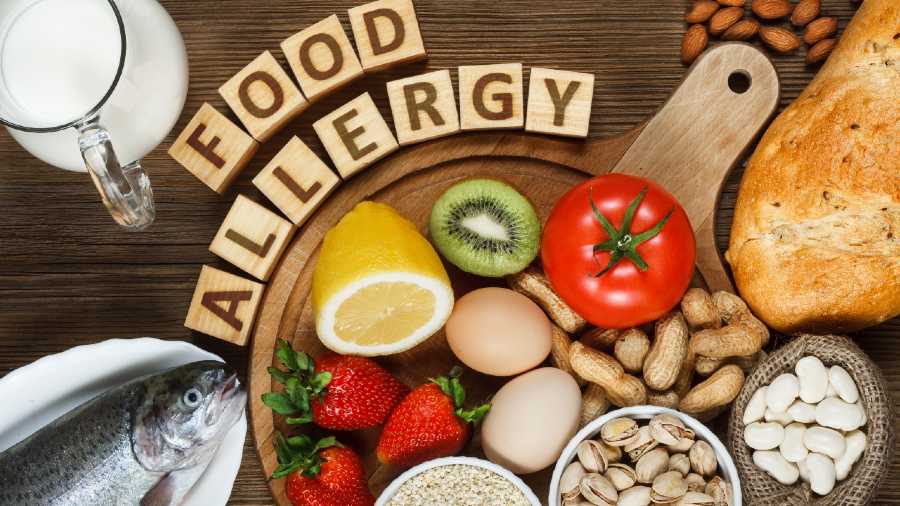My grandson Tomas first noticed a distressing reaction to hazelnuts at age 8. Whenever he ate Nutella, his mouth and throat felt tingly and swollen. A few years later, Tomas had the same reaction when he ate raw carrots. In researching this column, I learned that hazelnuts and carrots, although botanically unrelated, share a protein with birch pollen, to which Tomas is allergic. However, he can eat cooked carrots safely because cooking denatures the allergenic protein.
Now 21, he has not yet reacted to other foods that also contain the birch pollen protein, namely celery, potato, apple and peach. His father said that as an adult he has developed similar mouth and throat symptoms when he eats apples and peaches, especially during pollen season.
I also learned of another common link between pollen and food sensitivities. People allergic to ragweed may also react to bananas and melons. Again, a shared protein is responsible. This type of allergy is believed to start with sensitisation to inhalation of the offending pollen that later results in an allergic reaction when the food protein is consumed.
Fortunately, pollen-food allergy syndromes, although not pleasant, are mostly mild and not life-threatening.
Unfortunately, a growing number of people can experience severe, potentially fatal reactions to certain foods, most of which are omnipresent in the American diet. The main culprits, the so-called “Big 9” — milk, eggs, peanuts, tree nuts, fish, crustacean shellfish, wheat, soy and sesame, which was recently added to the list — account for about 90 per cent of food allergy reactions.
Although commercially packaged foods now must label the actual or possible presence of major allergenic foods that can cause fatal reactions, other food allergens are not required to be listed. Changing eating habits are adding to the problem. Today’s growing dependence on foods prepared outside the home by restaurants, stores and factories makes avoiding food allergens more challenging.
Although allergies to milk, eggs, wheat and soy in infants and young children are frequently outgrown, others in the Big 9 are nearly always lifelong. And people who were allergy-free as youngsters do not necessarily remain so. New food allergies can develop at any age.
According to Dr Scott H. Sicherer, allergist at the Icahn School of Medicine at Mount Sinai in New York, US, explains that the only real food allergies are adverse immunological responses. The body reacts to an otherwise innocent food as if it were a life-threatening infection and launches a full-scale offensive.
Symptoms may include hives, trouble breathing, vomiting or anaphylaxis — a severe, potentially fatal shock reaction that occurs within seconds or minutes of exposure to an allergen, sometimes in only tiny amounts.
More than 40 per cent of food-allergic children and half of food-allergic adults experience at least one severe reaction in the course of their lives. Still, many people who think they have a food allergy actually don’t when they’re tested with a blind oral challenge, in which foods are tested under medical supervision to see if a child reacts. Others incorrectly consider all kinds of adverse reactions to foods to be allergies.
Food intolerance, for example to lactose — the natural sugar in milk — is not an immune reaction but rather results from deficiency of the enzyme lactase. Many Asians develop redness and flushing when they consume alcohol because they lack an enzyme to digest it. Other people may think they’re allergic because they experience drug-like reactions, like extreme jitteriness from the caffeine in coffee and tea.
Sometimes, long-term avoidance of a food can result in an allergic reaction when that food is eventually consumed. This can happen to children with skin allergies who avoid milk; they may later experience an allergic reaction when they finally consume it. Occupational exposures, the use of skin care products, even tick bites can sometimes result in adult-onset food allergies if there is cross-reactivity to an allergenic substance in both.
And while in years past allergy-prone families were advised to avoid exposing their children to peanuts until age three (advice that is likely to have contributed to the current explosion of peanut allergies in children), it now appears that early introduction — at six months — of a highly allergenic food is actually protective, diminishing the risk of a later-in-life reaction, Dr Sicherer said.
Further confusing the food-allergy picture is the fact that under different conditions people may respond differently to the same food. Thus, for some, an allergic reaction may occur only when a particular food is consumed in large amounts or in conjunction with alcohol or intense exercise, which allergists call “augmentation factors”.
Recent desensitisation studies, which aim to reduce sensitivity to allergic foods by gradually exposing people to minute amounts of allergens over several months, and others underway may make life less terrifying for people with severe food allergies. Meanwhile, avoiding offending foods offers the best protection.
NYTNS











